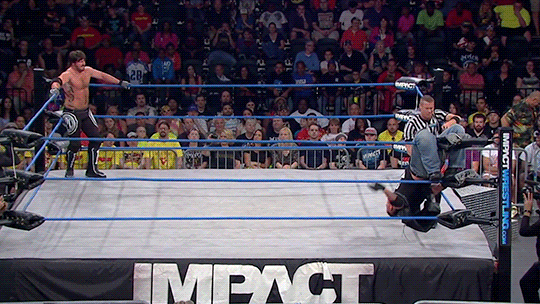#Ken Anderson
Photo
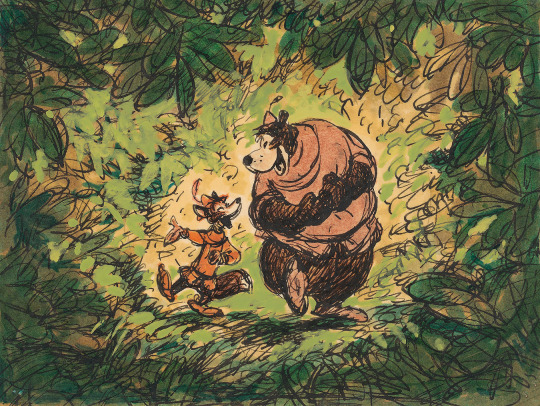





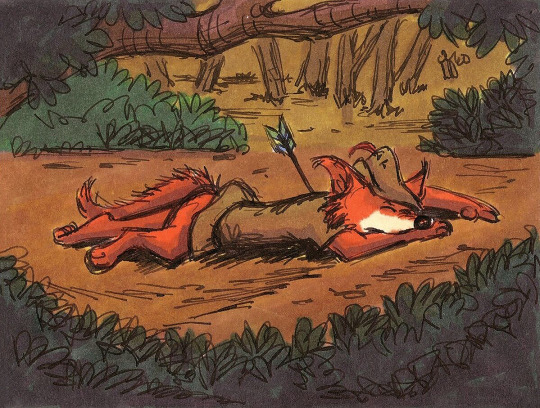
Concept art for Robin Hood (1973) by Ken Anderson
#disney#robin hood#ken anderson#disney concept art#visual development#animation art#art#artwork#disney animation
4K notes
·
View notes
Photo





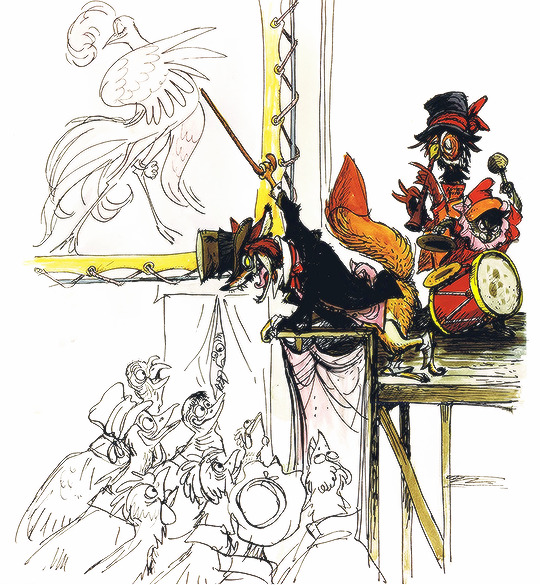
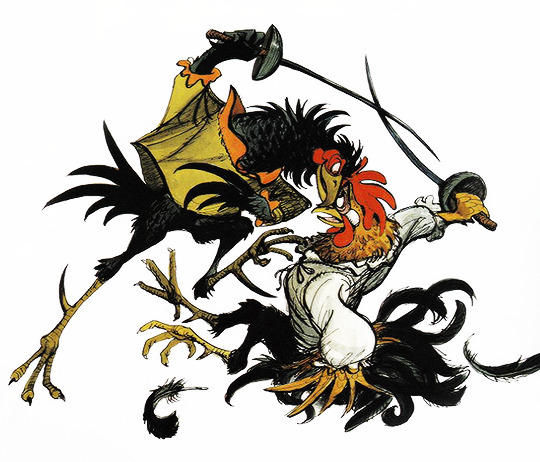
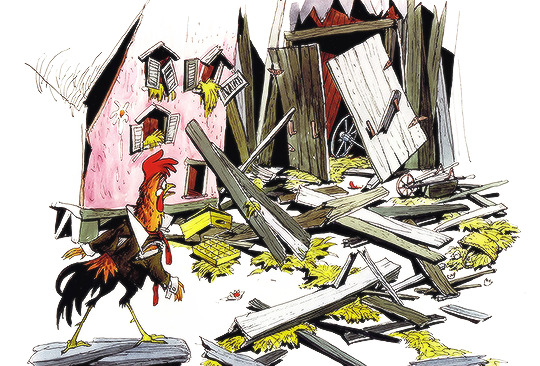

Chanticleer concept art by Marc Davis
Chanticleer is likely the most famous of all canceled projects at the Walt Disney Animation Studios. Although these drawings were done in the early 1960s, the studio had been trying since the late 1930s to develop a feature film based on two French stories: the play Chantecler by Edmond Rostand and the Roman de Renart or Reynard the Fox, a literary cycle first collected in 11th-century Europe. The two stories were initially developed separately. Storymen Ted Sears and Al Perkins were the first to work on them, but they quickly ran into the same problem that would constantly plague Chanticleer for its entire development existence: how to make an arrogant rooster into an appealing protagonist.
Sears: We, or any other cartoon outfit, cannot depict a likable, interesting rooster character. Good animators have told me this, and only some revolutionary change or inspiration would make a rooster character sympathetic.
Development on Reynard also ran into similar problems of having a protagonist with a less-than-admirable personality, as Reynard the Fox is one of the most famous sources that propagated the image of a fox as a sly trickster. By 1945, the idea to combine the two properties came about, likely to help alleviate the problem of Chanticleer’s arrogant character by having a villain for him to play off of. Attempts to develop it again continued on through the 1940s, but nothing ever panned out.
In early 1960, Marc Davis and Ken Anderson, uninterested in any of the films in development at the time, took a trip down to the Animation Research Library to find ideas for a film they could develop on their own. Davis, being a fan of musical theater, wanted to do a big Broadway musical-style animated feature. They came across the old treatments for Chanticleer and jumped on the chance. They disregarded the original source materials (aside from the basic premises) and began to develop their own plot, envisioning it as a satiric comedy.
The story would have been about a rooster named Chanticleer who believes that his crowing makes the sun rise every morning. Everyone else in the village adores Chanticleer because they believe in his power too, and they elect him mayor of the town. However, he becomes an overbearing leader, ordering the hens to lay more and more eggs. The townsfolk come to resent him, and Reynard the fox arrives and takes advantage of the situation, wishing to exploit the village for his own benefit. He entertains the citizens, and the chickens stay up all night, becoming too tired to lay any eggs. An angry Chanticleer orders Reynard to leave, but Reynard announces that he will run for mayor against Chanticleer. Chanticleer finds himself in a duel at dawn against a Spanish rooster who works for Reynard and doesn’t realize that the sun has risen without him. Once he discovers that his crowing does not bring up the sun, he realizes his foolishness and is humbled, allowing the villagers to forgive him. Because although his crowing never made the sun come up, it did awaken the citizens for them to be able to start their days.
Cost cutting is what effectively ended Chanticleer’s chances. Walt was pressured to stop the production of animated feature films moving forward, as their already existing catalogue would have been enough for the company to profit off of during re-releases.
Davis: Walt was about ready to dump animation; then he got to thinking, “I owe these people something,” which he did. So he said, “Hell, these guys know how to make these films without me.” I don’t think the others realized how eager the members of this business gang were to get rid of animation. Everything after Dalmatians was done with a minimum of Walt’s supervision. I think he got spread very thin: he got terribly interested in the Parks, his vision of Epcot, and more.
But as preoccupied as Walt was, he didn’t have it in his heart to shut down animated film production for good. He did, however, reduce the output by setting a schedule of a new film every four years rather than every two. This meant that one of the two films in development at the time, Chanticleer and The Sword in the Stone, had to be cut. The decision was obvious, as Chanticleer would have been much more expensive to produce, and The Sword in the Stone was a simpler story with human characters and a cute underdog protagonist.
Davis: We had all the artwork up on the walls, and the money people at the studio came in like it was a funeral. We went all the way through the presentation and met with silence. Then a voice from the back of the room said, “You can’t make a personality out of a chicken!” They all filed out and that was the end of it.
Walt would soon call up Marc Davis to ask him to help out at WED (later called Imagineering), which is where Davis would stay for the remainder of his Disney career (where he would contribute to some of the most beloved Disney attractions of all time), thereby making Chanticleer the very last thing he worked on at the animation studio.
Davis: I had always kind of doubled up: I did story on an awful lot of stuff that was not made, including some damned good things. I think some of the best drawings I ever did for the Studio were for Chanticleer.
Chanticleer has grown a legacy of its own, perhaps solely because of how appealing and well-drawn Davis’ work for the project was. As animator Andreas Deja put it, “Marc designed some of the best-looking characters I’ve ever seen--those drawings want to be moved and used... The designs for Chanticleer show the same level of graphic sophistication as his paintings. When that’s combined with his very thorough knowledge of anatomy and the Disney appeal, the result is outstanding.”
Mel Shaw attempted to rework a new treatment for Chanticleer in 1981, but it was quickly squashed. In 1992, Don Bluth, an ex-Disney animator who, like everyone else, loved Marc Davis’ work on Chanticleer, tried his hand at the story himself with the film Rock-A-Doodle, though to little critical or commercial acclaim.
Although Marc Davis never worked on an animated film again after Chanticleer, some of the designs he created for that film did find their way into his WED project America Sings and later Splash Mountain, when the animatronics from America Sings were repurposed.
research sources from [x][x][x], The Disney That Never Was: The Stories and Art of Five Decades of Unproduced Animation by Charles Solomon, and Marc Davis: Walt Disney’s Renaissance Man, Chanticleer chapter by Charles Solomon
photo sources [x][x][x]
250 notes
·
View notes
Photo



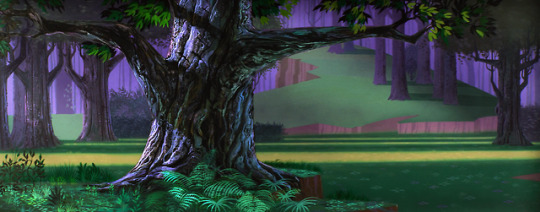
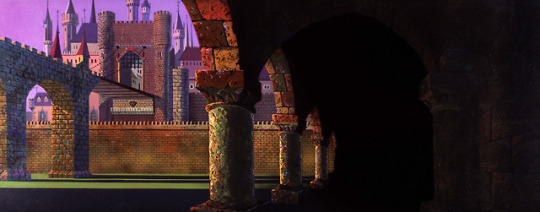
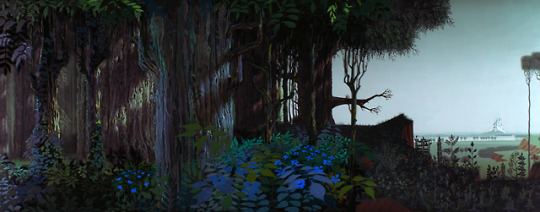


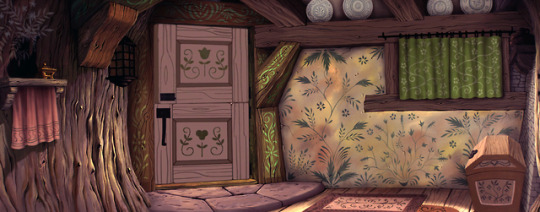

Sleeping Beauty (Clyde Geromini, 1959).
#sleeping beauty (1959)#clyde geronimi#roy m. brewer jr.#Donald Halliday#ken anderson#don dagradi#la bella durmiente#la bella durmiente (1959)
135 notes
·
View notes
Text

Sport Magazine (January 1976)
#1976#1970s#70s#Sport Magazine#American football#sports#Cincinnati Bengals#Cincinnati#Ohio#Dave Lapham#Ken Anderson#~
20 notes
·
View notes
Photo


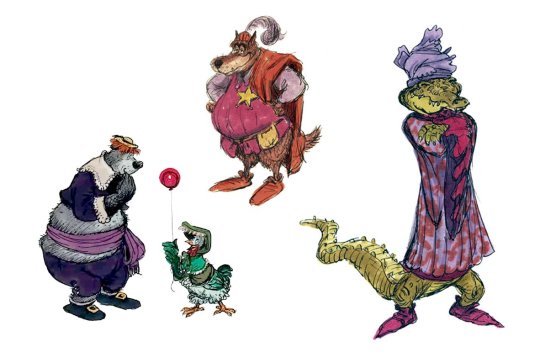
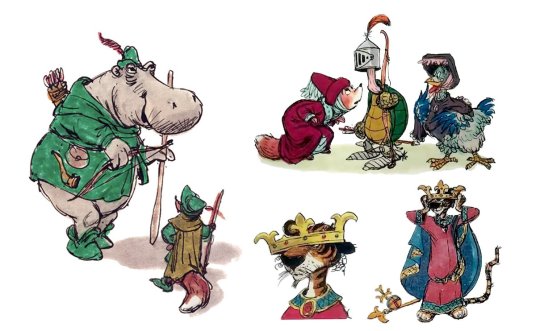
Character design work by Ken Anderson for Robin Hood
#ken anderson#robin hood#robin hood 1973#character designs#concept art#disney#disneyedit#disney edit#capturingdisney#*
200 notes
·
View notes
Text

6 notes
·
View notes
Text
youtube
#Young Bucks#MCMG#Nick Jackson#Matt Jackson#Alex Shelley#Chris Sabin#Sabu#The Pope#Doug Williams#Ken Anderson#Abyss#Rhino#Rhyno#impact wrestling#TNA#Youtube
6 notes
·
View notes
Text
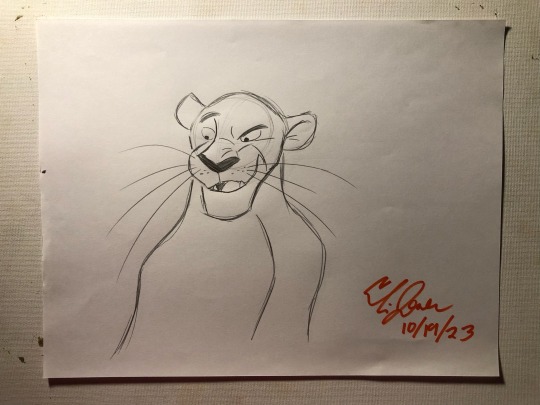


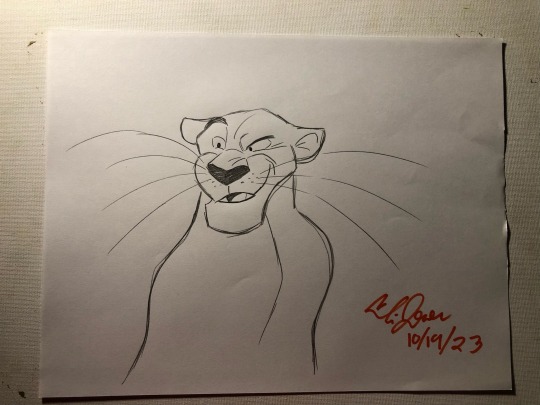
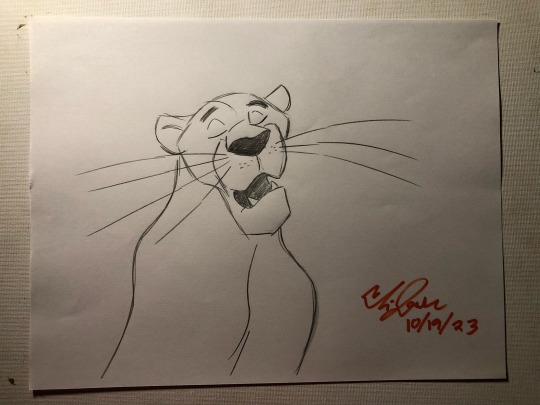
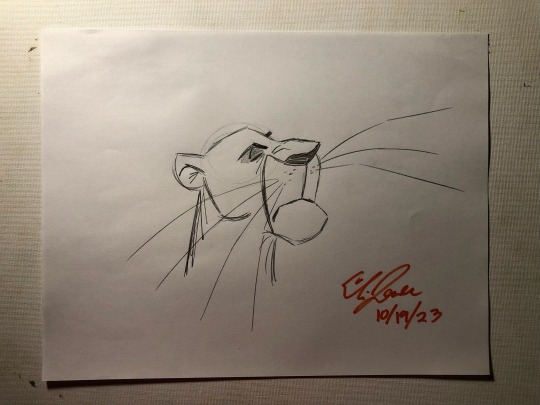



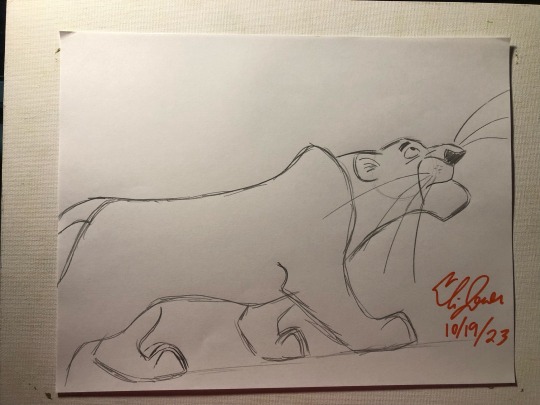
🐆 Similarly to what I did last night, today I looked through another blog post on Andreas Deja’s animation blog in which he showcased some of Milt Kahl’s rough animation drawings of Bagheera in “The Jungle Book”. They are of the scene early on in the movie where Bagheera orders Mowgli to climb a tree to sleep in for the night: “Go on, up you go.” I even looked some other Milt Kahl drawings of Bagheera which showed how the animator observed how actor Sebastian Cabot read his lines as Bagheera during recording sessions for “Jungle Book”. Another one of Bagheera’s main animators was Ollie Johnston, whose scenes included the panther’s discovery of Mowgli, taking him to the wolves den, his nighttime discussion with Baloo, and his heart eulogy thinking that Baloo was killed by Shere Khan. Yesterday was the 56th anniversary of Disney’s “The Jungle Book”. #Disney100
#Bagheera#The Jungle Book#Disney fanart#late night drawing#rough pencil sketches#panther#black panther#Milt Kahl#Ollie Johnston#Walt Disney#Bill Peet#Ken Anderson#Vance Gerry#Floyd Norman#Rudyard Kipling#Sebastian Cabot#Disney 100#The Jungle Book 1967#Mowgli#Disney in the 60s#1967 movies
9 notes
·
View notes
Photo



Walt Disney’s Mickey Mouse Club Magazine #1 (1956)
Art by Collin Campbell and Ken Anderson
#mickey mouse club#vintage disney#disney#disneyland#vintage disneyland#vintage#1956#1950s#snow white's scary adventure#collin campbell#ken anderson
72 notes
·
View notes
Text
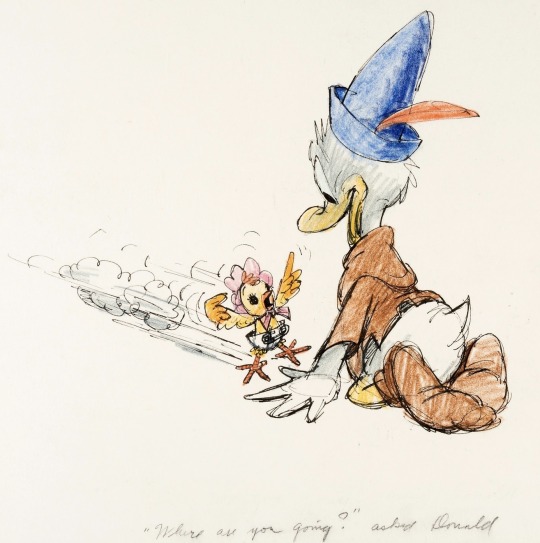

Chicken Little Concept Art (1967)
#60s#disney#concept art#chicken little#ducky lucky#donald duck#goofy loofy#goofy#presentation art#character designs#pitch art#unproduced#never made#ken anderson
42 notes
·
View notes
Text

Ken Anderson - Concept art for 101 Dalmatians (1961)
Source
4 notes
·
View notes
Photo
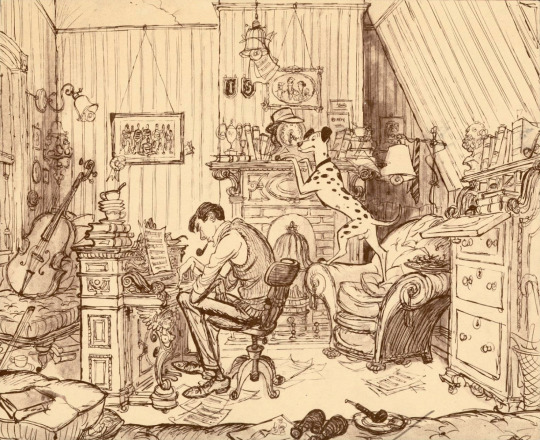


Concept art for 101 Dalmatians (1961) by Ken Anderson
#disney#101 Dalmatians#visual development#disney concept art#ken anderson#art#artwork#animation art#animation#disney animation#disneyedit
8K notes
·
View notes
Photo
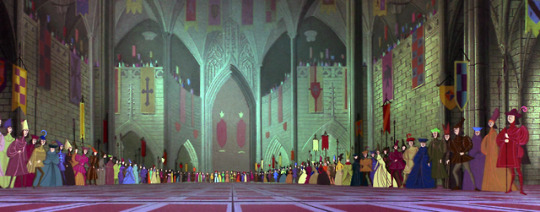



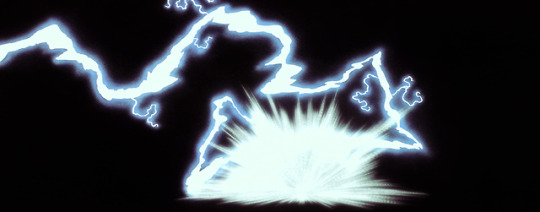

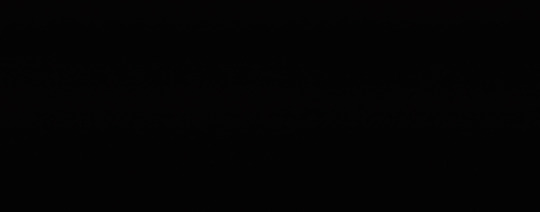



Sleeping Beauty (Clyde Geromini, 1959).
#sleeping beauty (1959)#clyde geromini#roy m. brewer jr.#Donald Halliday#ken anderson#don dagradi#eyvind earle#bill peet#sleeping beauty#la bella durmiente#sesión de madrugada#sesiondemadrugada
82 notes
·
View notes
Photo
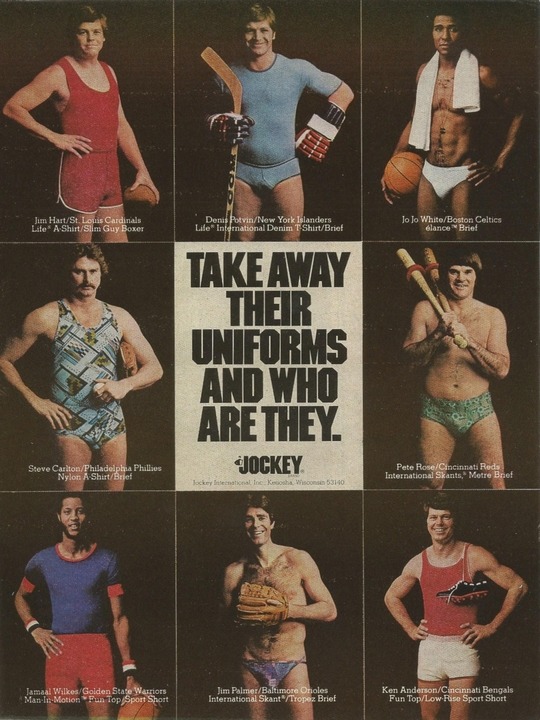
Jockey underwear ad, 1977
#1977#1970s#70s#Jockey#Jim Hart#Denis Potvin#JoJo White#Steve Carlton#Pete Rose#Jamaal Wilkes#Jim Palmer#Ken Anderson#70s fashion#fashion#advertising#~
169 notes
·
View notes
Photo

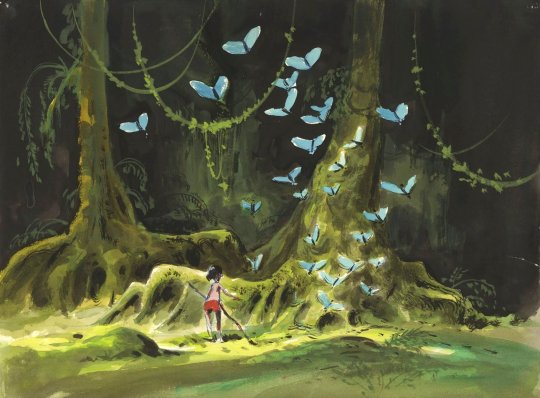

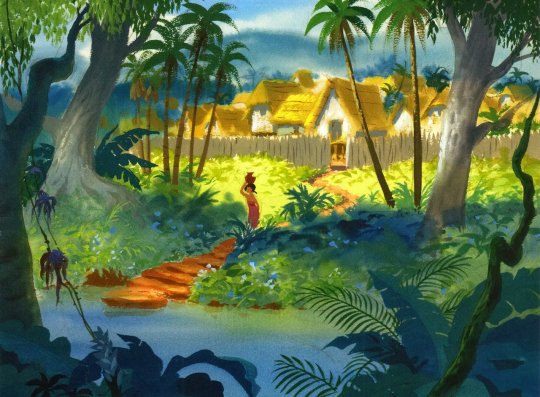
Concept art by Ken Anderson and Al Dempster for The Jungle Book (1967)
#concept art#ken anderson#al dempster#the jungle book#the jungle book 1967#jungle book#disney#disneyedit#disney edit#capturingdisney#*
216 notes
·
View notes
